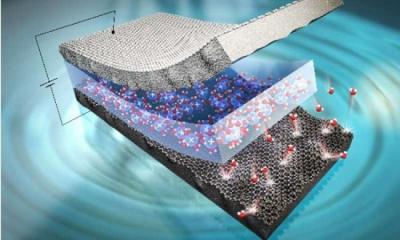Researchers at the Korea Advanced Institute of Science and Technology (KAIST) managed to create durable artificial muscles using a graphene electrode. Ionic polymer metal composites (IPMCs), or artificial muscles, change in size or shape when exposed to electric fields and could be extremely useful in the fields of robotics and prosthetics.

IPMC motors, (referred to as actuators), are created from a molecular membrane that is stretched between two metal electrodes. Upon applying an electric field, a redistribution of ions is caused that forces the structure to bend. These structures do not consume a lot of power and are able to mimic life-like motions. These devices, however, have a number of disadvantages like cracks that form on the metal electrodes and cause ions to leak through the electrodes and reduce performance. A possible solution to this problem is embodied in the researchers' thin electrode, based on an ionic polymer-graphene composition (IPGC). These new electrodes repel water and are very resistant to cracking. They also have a robust inner surface that allows the migration of ions within the membrane to cause bending.
The new IPGC actuator thin electrode based shows promise for use in biomedical devices, flexible soft electronics and more. The researchers plan to continue working on these actuators in 2015 and hope to develop a biomimetic robot.

